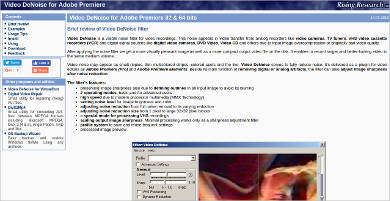

PS I'm also still using my old Lightroom version 6 which needs to work too but I would consider reluctantly subscribing to the latest version if neccesary if I can not continue with the old version There may be more thorough performance tests elsewhere on the Internet, if you Google hard enough for them. But there were some posts on a third-party site that are encouraging: I didn't see anything on the Topaz site about performance on the M1, but I didn't look all that hard. If you have that, you can run Photoshop and the Denoise AI plug-in natively!

However, Topaz now has a M1-native version of the Denoise AI plug-in.

Rosetta 2 can't run applications in "mixed mode" (e.g., M1 Photoshop with an Intel plug-in), so if you have older, Intel-only versions of the Topaz plug-ins, you'd have to run Photoshop under Rosetta emulation to use them.
DENOISE SOFTWARE FOR MAC FULL
I'm not associated with Topaz in any way other than a customer, but if I am correct, all their products have a fully-functioning 30 day trial without watermarks, so you can give it a full test drive to do your own assessment.I was wondering as the latest Topaz are not native M1 apps if they run quickly in Rosetta mode? I have a third issue of way preferring their non-AI Adjust product to its AI successor, but that is getting OT from the DeNoise subject at hand. The good news is that it's still there, but I think it has enormous applications beyond simply reducing noise and as such should have its own stage and not be buried in a DeNoise dropdown. If it can do that to 178 x 115 pixels, imagine how good it works on a 24 MP photo. Here's a puny 178 x 115 pixel crop of what it did in one click to one of my 1997 Kodak DC210 photos. Now, however, AI Clear is relegated to a second drop-down button in DeNoise AI that can very easily get lost if you're not looking for it. It's the Topaz product I use the most of any in their arsenal. photos to super-clean photos that belie their original size. Their first AI product if I am correct was AI Clear. Second is that Topaz should not be so quick to turn their single best product into a forgotten stepchild. It happens rarely, but when it does, I go back to DeNoise 6 and get the smooth result I want while still holding detail, which was DeNoise 6's signature point-of-difference. Their intelligence thinks it should be sharp and it shouldn't. There are some shots of mine with some texture in them that DeNoise AI insists on sharpening and accentuating even with the noise slider all the way to the right and the detail slider all the way to the left. I have told them, though, two things related to DeNoise AI that I hope they will forever take to heart.įirst is that they should not discontinue their DeNoise 6, which was their flagship DeNoise product before DeNoise AI. To me their AI products are almost always simply magical. I've been a Topaz customer from virtually the day they started. Check out the video above for Morganti's full thoughts. This means you might not want to apply it to large collections of images, rather saving it for those where top-notch quality is most important to you. In my experience, DeNoise AI can give some great results, but it can require some significant time and resources. The majority of the time, when working on it in post-processing, you have to trade off keeping detail with reducing noise, but the promise of DeNoise AI is leveraging the power of artificial intelligence to retain more detail while getting rid of noise. Noise is an issue photographers across a ton of genres have to deal with, and it can range from being an inconvenience to a deal-breaker for image quality. This excellent video review takes a look at one of the most advanced pieces of specialized software for the task and how well it can take care of noise in your images.Ĭoming to you from Anthony Morganti, this great video review takes a look at Topaz DeNoise AI. Noise is one of the most common issues photographers have to deal with, and there are lots of different ways to deal with it in post-processing.


 0 kommentar(er)
0 kommentar(er)
